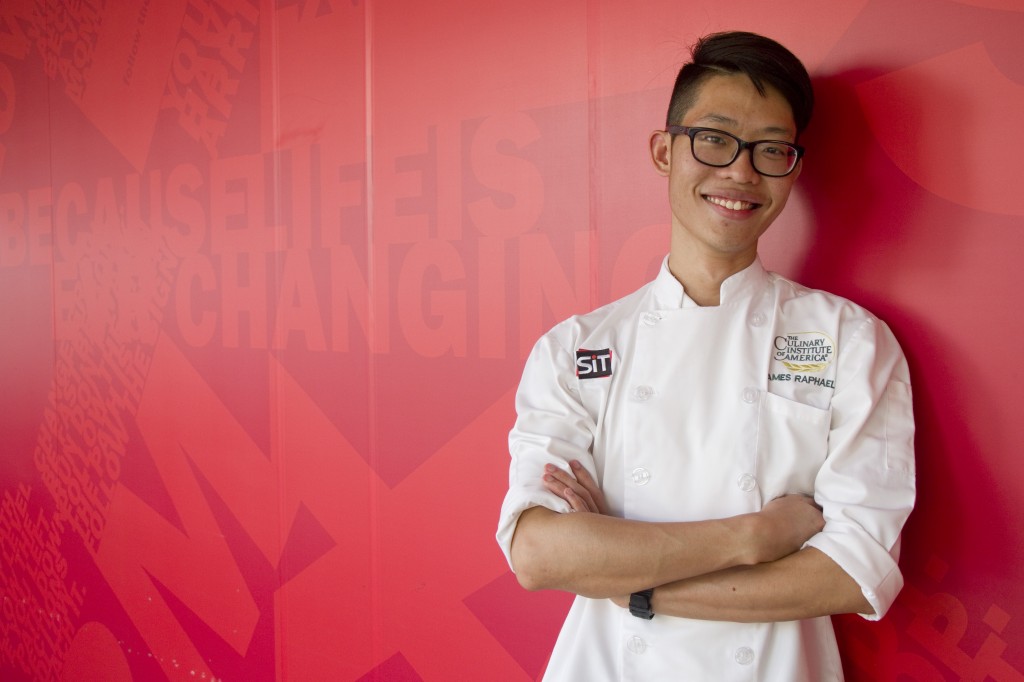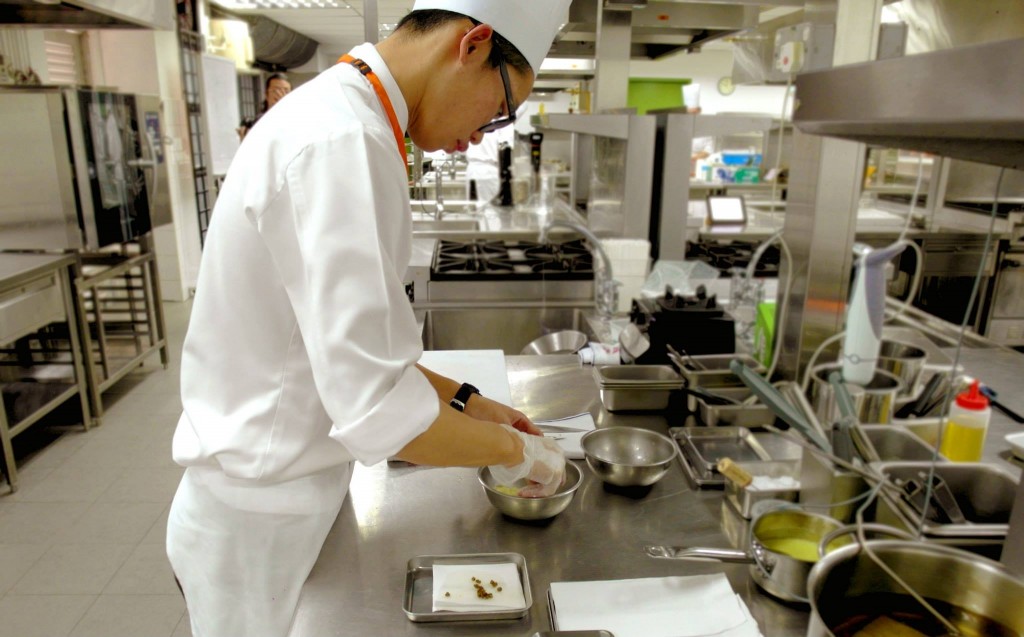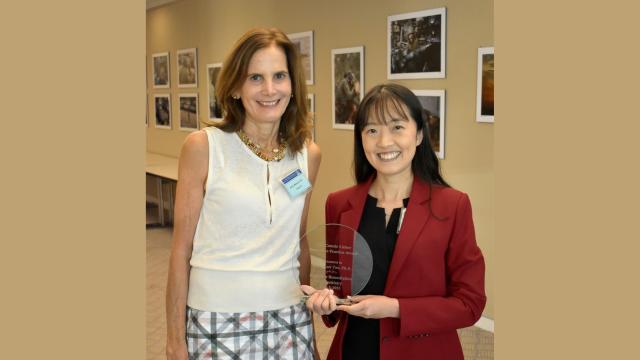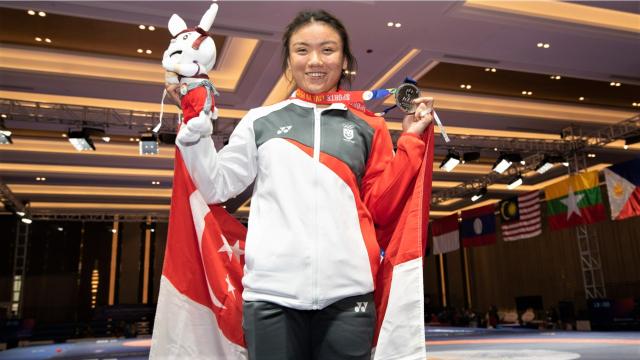“No one wants to eat something that is not appealing; we all eat with our eyes first.”
Raphael Ames Sim certainly has a way with words. But the second-year undergraduate at The Culinary Institute of America (CIA) prefers to let his hands do most of the talking.
And so far, this young culinary talent has put them to good use and whipped up some prize-winning fare.
At the LAwards Culinary Competition 2014 organised by Les Amis Group, Sim was crowned champion, and bagged $3000 in cash and an all-expenses paid trip to Burgundy, which includes visiting some of the top Michelin-starred restaurants in France.
SIT sits down with Sim to find out more about his winning formula as well as how it feels to rub shoulders with top chef Tetsuya Wakuda, who was a judge at the culinary competition.
1) Tell us about the prize-winning dishes you created for the contest.
Appetiser: Olive oil poached turbot, fennel and pearl onion salad in elderflower vinaigrette, dill emulsion sauce and garnished with caviar.
Main: Lavender honey-glazed duck breast, beetroot puree, frangelico yogurt, port poached cherries, poached carrots and braised brussel sprouts.
Dessert: Pistachio financier, pistachio diplomat cream, raspberry and rose sauce, meringue shards, cider gelée, crumbled pistachio and shattered raspberry.
2) How did you end up participating in the competition?
This opportunity came through the school. Les Amis contacted six institutes in Singapore, one of which is CIA. We were told to come up with a menu and that each school was to send 3 representatives to compete in the contest. In the end, a total of 13 contestants were fielded in the competition.
3) Tell us more about the challenges you had to face in the contest.
The competition, which was held at SHATEC, had two rounds, which were one week apart from each other.
There was a mystery box challenge in the first qualifying round. You don’t know what to expect; you are given a box, you open it and you have to cook whatever is inside. There was a lot of uncertainty for this round; you get nervous because you’re not sure what to expect and don’t even know how to prep for the competition.
In the end, it was completely out of what we had planned. We were expecting two meat items. Instead we got six live lobsters in the box, which we had to cook and create an appetiser and a main course.
From this qualifying round, five finalists were picked. In the finals, we had to prepare various European dishes in two and a half hours: an appetiser, a main course and a dessert.
4) Any mishaps during the contest?
At one point, I was holding a tray of tarts and preparing to plate them. But I fumbled with the tray and nearly dropped everything. My heart dropped. Thankfully I managed to save them in time.
5) What brought you to CIA?
When I was at Nanyang Polytechnic, I studied Hospitality and Tourism. I hadn’t had a ‘passion’ for cooking unlike some of my CIA peers, who’ve always wanted to be chefs.
At that time I was starting to watch food channels on television. Seeing how a few ingredients can create something so wonderful in terms of presentation and flavour, I started to experiment in the kitchen with pots and pans, and did a lot of research, read books and also went online to find out more about cooking.
Towards the end of my polytechnic stint in 2011, I had a six-month long internship at Equinox at Swissotel Hotel Singapore. At that point, there was a chef consultant at the hotel, Jonas Lundgren, who is a highly acclaimed chef. The dishes he created really left an impression on me; they were not only beautiful but their flavours were even more amazing. There is always more than meets the eye to his dishes. That encounter was a turning point for me.
Swissotel Hotel SingaporeJonas Lundgren
6) Why do you think there is such an explosion of interest in food today?
In my opinion, one reason is that it has become easier [to become a chef] over the years. Technological advancements have made the preparation of food easier today; for example, blenders and mixers are now used to make soups while modern ovens allow for good temperature control during the baking process.
I also believe that the world is starting to recognise the culinary arts as a career and that the people who become chefs are not in it because they have nowhere else to go. The world is starting to give credit to chefs.
7) What are your plans going forward now that you’ve hit your first milestone of winning a culinary award?
I hope to open my own restaurant by the time I hit 30. After that, I want to give back to society and do things such as train other young chefs-to-be.
8) If you could head a restaurant tomorrow, what kind of menu would you create?
My restaurant menu would have a European theme; European techniques are good and simple yet their dishes have such finesse. But I will also incorporate flavours from Asia; some of these ingredients are not just interesting and unique but their flavours cannot be replicated, for instance, kaffir lime leaves. They bring a lot of ‘dimension’ to dishes.
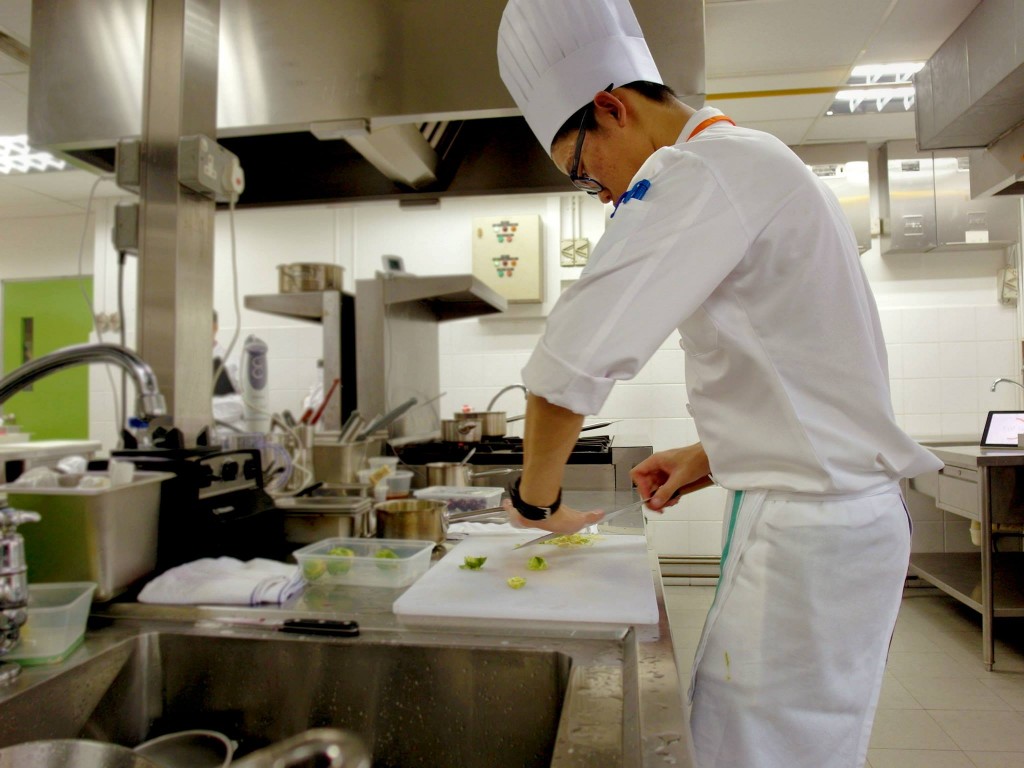
Photo credit: Les Amis Group and SHATEC Institutes
9) Tell us about your personal culinary philosophy.
I think ingredients should ‘speak’ for themselves. If you are going to create something seasonal, you should let the ingredients and their flavours stand out; you don’t want to mask it with herbs and spices. That’s the kind of direction I would like to take in future.
10) You got to rub shoulders with celebrity chef Tetsuya Wakuda, one of the most highly acclaimed chefs in Asia Pacific. What is your impression of him?
After the finals, the winners were treated to a luncheon at Les Amis where I was seated next to him. My conversations with him were very pleasant and I learned about his philosophies on food. One of them is that he sources the best ingredients for his dishes from everywhere around the world.

